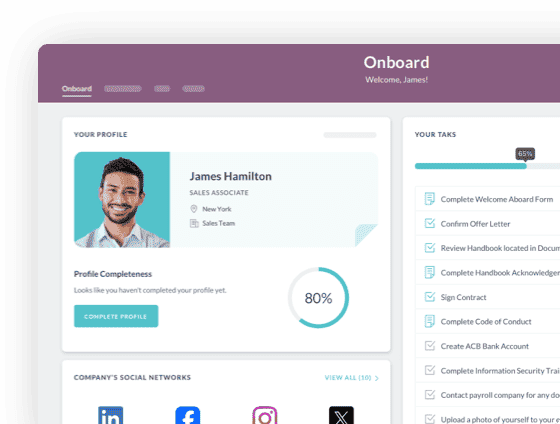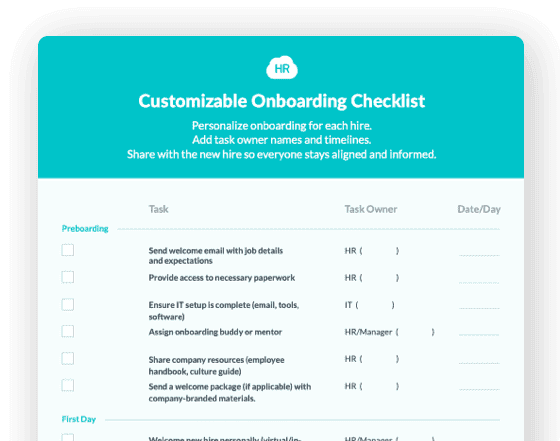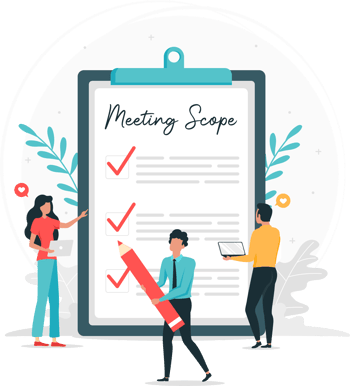3 Tips to Make Your Next Employee Meeting Meaningful and Memorable



 Cut onboarding time
by 60%—here's the
Ultimate Checklist
that helped do it.
Cut onboarding time
by 60%—here's the
Ultimate Checklist
that helped do it.

Managing people—especially in an organization — requires a level of social, emotional, and cognitive fortitude and intelligence that not everyone can boast. This is why people-focused roles, like being a business owner or working in a company's HR department can be overwhelming.
Every step you take has to be intentional and has to work towards the good of the company. But in the same breath, you have to also keep the peace among staff members while fostering harmony and cooperation.


If you enjoyed this post, sign up for a Free Trial of our software!
When engaging with a member of staff one-on-one, it's relatively easy to achieve this. But what happens during employee meetings when every member of staff is there at the same time? With all the different ideas and personality types in the room, keeping the peace or even achieving any serious objective can prove futile.
Does this mean that organizing productive staff meetings is a pipe dream? Thankfully, the answer is no. You can hold employee meetings that your staff will look forward to.
We've outlined a few simple tips to help make your next employee meeting both meaningful and memorable — in a right way. Whether you're holding the meeting in a physical room or via teleconferencing, you can take these staff meeting best practices to the bank, regardless of the business or industry you work in.
1. Keep The Discussions Within the Meeting's Scope
One of the most apparent traits of productive staff meetings is that all discussions stay focused. No one wants a meeting where the convener just rambles on about anything and everything concerning the company.
Every meeting should have a plan that should be strictly adhered to. This is not the time to address a dispute between two employees, openly rebuke an employee's shortcomings, or talk about the misuse of office equipment. Do this, and all you'll be achieving is a lower staff loyalty score.
A neat hack would be to prepare the agenda a few days before the meeting and hand it out to your employees. This way, your staff knows what the meeting is going to be about and have a few days to prepare themselves for it. This makes for a more agreeable audience when the day comes around.
All your employees have got work to do to help grow your company, so keep the meetings short and focused so everyone can return to work.

2. Encourage Employee Input
People tend to learn better when they talk less and listen more, an approach that should be taken by every business owner and manager when dealing with employees. The people that work in your establishment are much more than the roles they fulfill. Some of them have vast personal or professional experiences from their life before and outside your company.
You may be the one at the helm of affairs, and you may know the objectives of the company more than anyone else. However, having more experienced heads to brainstorm with never hurt anyone. When you let your employees give their two cents, it opens you up to a world of possibilities as to how to deal with the current problem. It may be a novel idea or a reminder of something you've heard before. Either way, it helps the problem-solving process.
Not to mention that it is suitable for the workplace atmosphere when employees know that their boss is willing to listen to their problems and their ideas and act on them. It gives them a sense of belonging and worth and increases the company's loyalty score.
This approach to problem-solving during meetings significantly reduces the possibility of the leaders coming to a one-sided and subjective decision that does not work for everybody.

3. Keep Your Focus Only On The Stuff That Matters
The best way to deal with the wrongness of a situation is not to expound on how wrong it is, but to focus on how to make it right.
This is, unfortunately, a mistake many business leaders still make when something goes wrong in the company. Say a deal goes bad, they call for a staff meeting and dive into an investigation to find out how things went so wrong. They spend all the time berating the employees and attacking all the decisions they made leading up to the bad deal. Most of the time, this achieves nothing but dampens the spirits of everyone in the meeting.
A better approach to have an effective staff meeting would be to focus on how to salvage the deal, perhaps even to make a better offer for the other party to consider—no attacks on each other, no tearing down of other people's opinions, and no finger-pointing. Focus on moving forward and delivering optimal performance.
And while on the quest to solve a problem, remember to involve all staff members that have an idea, including those who may have made poor decisions that led to the problem. Sure, not everyone's idea will be brilliant, but typically, ideas given in this context are not all wrong either. Put every idea on the table, pick the elements that make sense, and merge them. By the time you implement this, the issue will disappear.

Conclusion
As stated earlier, handling employees in any company can be a terrifying scenario, or it could be an enjoyable experience. It all depends on the strategies you apply to get them all moving happily towards the company's ultimate goal. These three tips work not only in a meeting set up but also for individual and collective relationships between employees and the company leadership. Now go out and have a productive meeting.
About Author
Frank Hamilton has been working as an editor at review service Online Writers Rating. He is a professional writing expert in such topics as blogging, digital marketing and self-education. He also loves traveling and speaks Spanish, French, German and English.
Keep Reading
15 Proven Ways to Create a Healthy Work Environment (2026 Guide)
A healthy work environment is a workplace where employees experience psychological
Best Workday Alternatives for Mid-Market Companies in 2026: Complete HRIS Comparison Guide
"We implemented Workday and our HR team still can't figure out half the features six
Company Culture Software: How to Build a Thriving Workplace in 2026
Ask any business leader what drives lasting organizational success, and you'll hear
Like What You Hear?
We'd love to chat with you more about how HR Cloud® can support your business's HR needs. Book Your Free Demo

Build a Culture of Recognition. Boost Engagement. Guaranteed.
Workmates empowers employees to stay informed, connected, and appreciated—whether they’re on the front line, in the office, or remote. Recognition drives 12x higher engagement.Trusted by industry leaders in every sector




Cut Onboarding Costs by 60%.
Take the confusion and follow-ups out of onboarding with automated workflows, digital forms, and structured portals—so new hires ramp faster 3X quicker.Trusted by industry leaders in every sector




